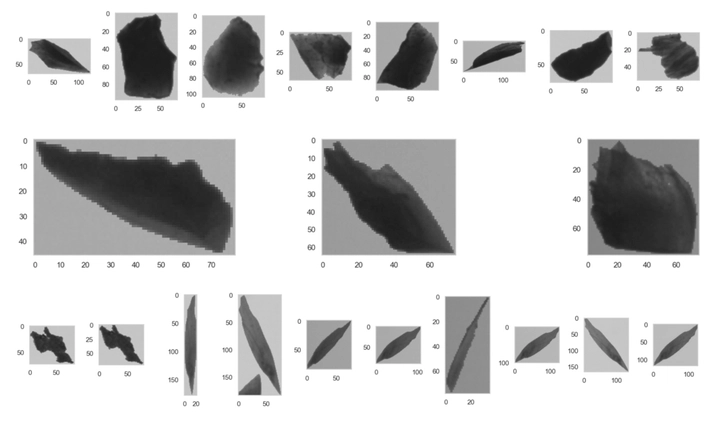Ancient Mortars Classification
 Photo of sample images used for the model
Photo of sample images used for the modelAdvisor: Markus Eberl
This project leverages advanced computer vision techniques to analyze ancient mortar samples, enabling rapid and automated classification of material composition. The methodology integrates cutting-edge deep learning with traditional archaeological science, providing new insights into construction practices and cultural exchange.
Key Methodology
The analysis pipeline consists of two main components:
Particle Imaging and Classification:
- Each sample is processed through a gravity-fed apparatus to isolate individual particles.
- A high-speed imaging system captures multiple images of each particle, which are then classified into one of four categories: Kurkar, Oliverpress, Volcanicash, or Sand, using a Vision Transformer model.
- The model records confidence scores for each prediction to ensure reliability.
Post-Processing and Aggregation:
- Classified particles with confidence scores below a threshold (e.g., 0.9) are filtered out.
- Remaining classifications are aggregated at the particle level to assign a single label for each particle.
- Final composition percentages of the sample are calculated, providing a quantitative distribution of materials.
Unique Features and Advantages
- High Confidence and Accuracy:
- Consistent classification through rigorous filtering and validation processes, minimizing noise and misclassification.
- Quantitative Comparison:
- Representation of samples as probability distributions over particle classes enables mathematically grounded and reproducible comparisons.
- Efficiency and Scalability:
- Fully automated pipeline reduces reliance on labor-intensive manual methods and scales effectively to large datasets.
Impact and Applications
This project significantly improves the speed, accuracy, and reliability of analyzing ancient construction materials. By enabling statistical comparisons across samples, researchers can uncover patterns related to trade routes, resource availability, and cultural practices. The integration of advanced vision transformers sets a new standard for computational analyses in archaeological science.
For additional information, please refer to the detailed methodology document or contact the research team, publication paper is coming soon.